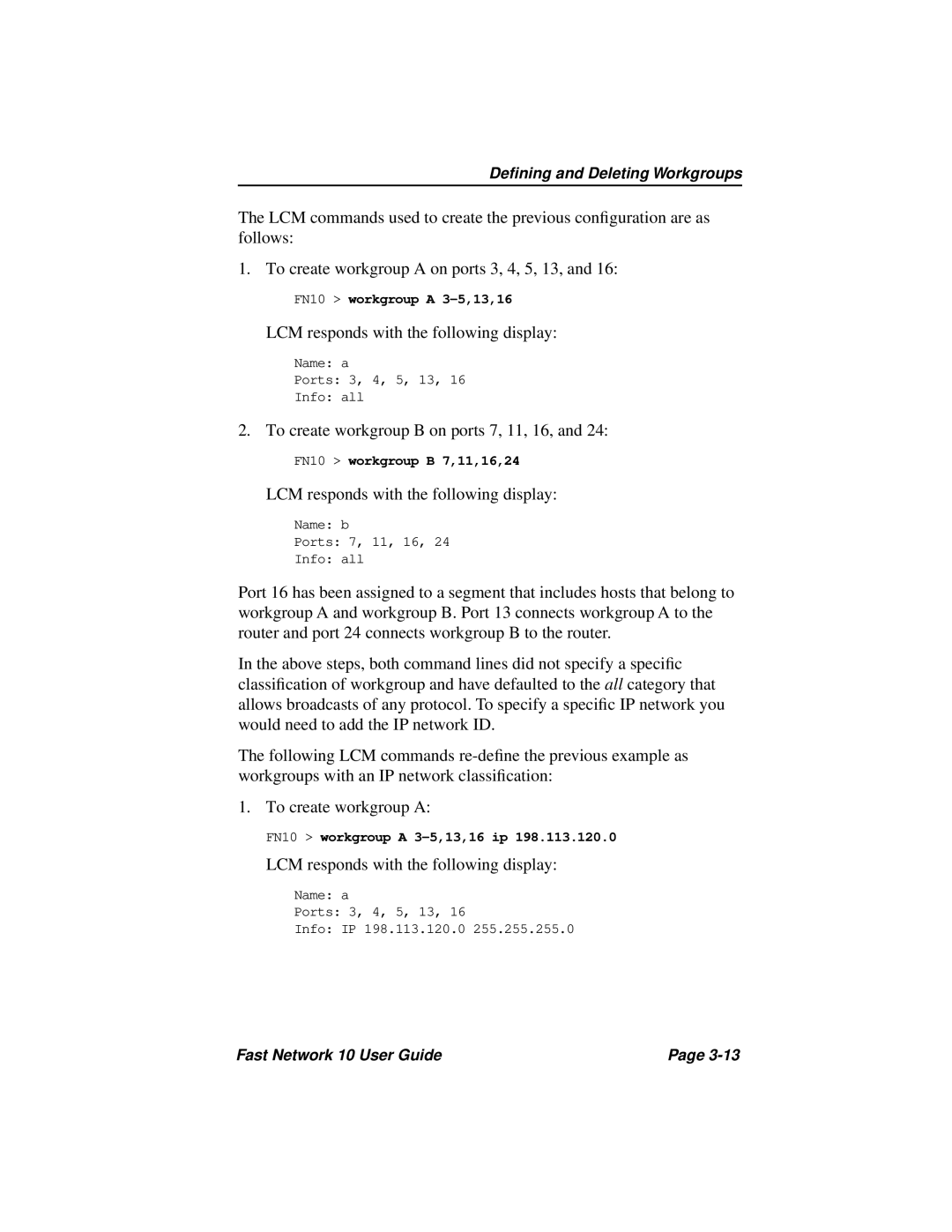Defining and Deleting Workgroups
The LCM commands used to create the previous configuration are as follows:
1. To create workgroup A on ports 3, 4, 5, 13, and 16:
FN10 > workgroup A
LCM responds with the following display:
Name: a
Ports: 3, 4, 5, 13, 16
Info: all
2. To create workgroup B on ports 7, 11, 16, and 24:
FN10 > workgroup B 7,11,16,24
LCM responds with the following display:
Name: b
Ports: 7, 11, 16, 24
Info: all
Port 16 has been assigned to a segment that includes hosts that belong to workgroup A and workgroup B. Port 13 connects workgroup A to the router and port 24 connects workgroup B to the router.
In the above steps, both command lines did not specify a specific classification of workgroup and have defaulted to the all category that allows broadcasts of any protocol. To specify a specific IP network you would need to add the IP network ID.
The following LCM commands
1. To create workgroup A:
FN10 > workgroup A
LCM responds with the following display:
Name: a
Ports: 3, 4, 5, 13, 16
Info: IP 198.113.120.0 255.255.255.0
Fast Network 10 User Guide | Page |
